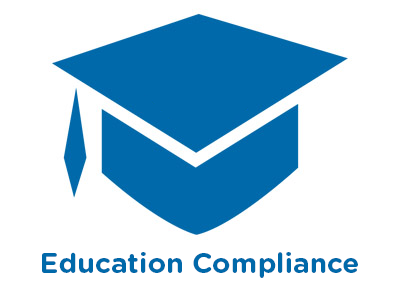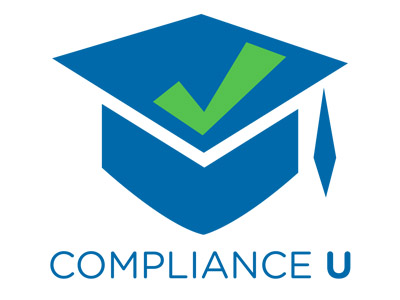 |
Quality Management: Customer Orientation |
0.75 |
Customer orientation is an organizational mindset in which meeting the needs of the customer becomes an organization’s focus. Customer orientation is an important aspect of quality management because it ensures customer satisfaction by integrating the customer’s needs into strategic planning, product development, and product delivery.
There are three components that comprise customer orientation: awareness of the market, communication of market intelligence to the entire organization, and initiatives to make use of the market intelligence. |
 |
CompTIA Cybersecurity Analyst+ (CySA+) CS0-003 Exam Prep |
1.00 |
Exam Prep to accompany 30 Bird's CompTIA Cybersecurity Analyst+ (CySA+) CS0-003 course. |
 |
A K-12 Student Guide to Implicit Bias |
1.00 |
Welcome to A K-12 Student Guide to Implicit Bias. In this course geared towards K-12 students, you'll examine implicit bias, why it matters, and what can be done to address it. |
 |
Overview of the Americans with Disabilities Act Topic 2: Reasonable Accommodations (Corrections) |
0.25 |
Welcome to the Overview of Americans with Disabilities Act, Topic 2: Reasonable Accommodations. |
 |
Fundamental Tools to Monitor Child Development (CDA 7) |
2.00 |
This course immerses early care and education professionals in the powerful trio of observation, documentation, and assessment. Discover how these tools allow you to closely monitor each child's progress, identify individual needs and interests, and tailor support accordingly. Dive deeper into using assessment activities to refine and elevate the quality of preschool care, ensuring every child reaches their full potential. |
 |
Preventing Sexual Harassment and Understanding California Law |
0.50 |
This course will teach California employees how to recognize sexual harassment, defines the rights and responsibilities of employers and employees, and provides an overview of the legal remedies available in sexual harassment lawsuits. |
 |
Strategic Decision Making: Decision Results (Instructor Guide) |
0.84 |
After implementing a decision, you should review the process you followed to reach it, regardless of the outcome. There are guidelines that you can use to review and learn from your decisions. You also need to be aware of the various pitfalls to avoid when learning from your decisions.
You can improve your decision making skills by examining a variety of other sources, such as the experience of people in your company and the decisions of other companies. You should not overlook these opportunities, because they will improve your decision-making skills, and help you to avoid similar mistakes in the future.
In this course you will learn to: identify the guidelines to follow and pitfalls to avoid when reviewing your decisions, and identify actions you can take to learn from the experience of others.
This Instructor's Edition of this course includes notes and suggestions to assist you in presenting the material, whether in an in-person classroom setting or as an instructor-led online or distance-learning course. It also provides you with the answers to questions found in mid-lesson activities, as well as in the quiz that concludes the course. |
 |
The Importance of Sensory-Rich Play (CDA 2) |
2.00 |
This course explores the research-backed benefits of this exciting form of play, from fostering essential developmental skills to sparking joy and curiosity. However, navigating regulations and concerns in early care settings can be tricky. Dive into practical strategies to empower young children in making choices and assessing risks amidst sensory-rich, highly physical activities, nurturing confident explorers with a deep love for learning. |
 |
Sales Management: Motivating Sales Teams |
1.00 |
This course will focus on motivating sales professionals, monitoring and increasing motivation levels, and addressing substandard sales performance. |
 |
Sepsis - What's new in caring for these patients? |
0.75 |
A comprehensive update provided for an intended audience of prehospital care providers. This update introduces new definitions for sepsis and septic shock, reviews sepsis epidemiology, pathophysiology, disease morbidity and mortality, and prehospital treatments. |
 |
GED: Science - Unit 1: Science Practices |
1.00 |
Welcome to Unit 1: Science Practices. Science practices describe the ways we collect, process, and analyze information. Each question on the science test will incorporate science practice within the content area being tested. In this unit, we'll explore some of those science practices. We'll define scientific method, describe variables, and learn about sampling techniques. We'll also explore some of the ways scientists represent and analyze the data they collect. |
 |
SARS: Protecting Workers |
0.17 |
This course covers how employers should keep their employees safe who are possibly exposed to SARS. This course also discusses general safety measures for workers in industries with the highest risk of coming in contact with SARS. These include healthcare workers, laboratory workers, and airline personnel. |
 |
Motivation: Identifying, Planning, and Implementing: Positive Mental Attitude (Instructor Guide) |
1.00 |
Your attitude affects every aspect in your life—from your family relationships to your interactions with strangers to your connections with business coworkers. Your attitude could determine the difference between getting a promotion and getting fired, and between a happy marriage and divorce. Stanford Research Institute (SRI) conducted a study that found that success is 88% attitude, and 12% education.
In this course you will learn to: improve your self-confidence, recognize your fears and work to overcome them, and identify the difference between perceptions and reality.
This Instructor's Edition of this course includes notes and suggestions to assist you in presenting the material, whether in an in-person classroom setting, or as an instructor-led online or distance-learning course. It also provides you with the answers to questions found in mid-lesson activities, as well as in the quiz that concludes the course. |
 |
Combating Sexual Harassment in the Workplace (NY) |
1.00 |
In recent years, the topic of sexual harassment in the workplace has been brought into the national spotlight, bringing with it renewed awareness about the serious and unacceptable nature of these actions and the severe consequences that follow.
Under state law effective October 2018, every employer in New York is required to establish a sexual harassment prevention policy which includes annual training, pursuant to Section 201-G of the Labor Law.
This course was created by CypherWorx based on the 2023 update of the training materials developed by the New York State Department of Labor and Division of Human Rights, and is designed to meet or exceed standards required by state law. |
 |
Organizational Communication: Leadership and Motivation (Instructor Guide) |
1.00 |
Organizational communication relies on the communication skills of employees, managers, and leaders. The competence of leaders is reflected in their communication skills. Communication skills also play a major role in differentiating a manager and a leader. To become an effective leader, you need to understand the theories of leadership. The structure of an organization also determines the ability of a manager.
Although motivation resides within an individual, organizations can affect motivation through communication. To motivate employees, management must clearly outline its expectations, goals, and rewards. Organizational structure can affect the communication used to motivate employees, as well as other types of communication within the organization.
In this course you will learn to: describe how communication skills and leadership are related, and define the theories of motivation, and identify motivational tools and the impact of nonverbal behavior.
This Instructor's Edition of this course includes notes and suggestions to assist you in presenting the material, whether in an in-person classroom setting, or as an instructor-led online or distance-learning course. It also provides you with the answers to questions found in mid-lesson activities, as well as in the quiz that concludes the course. |
 |
The Globally Harmonized System (GHS) for Hazard Classification and Labeling |
0.25 |
This course covers the Globally Harmonized System for Hazard Classification and Labelling. The Globally Harmonized System for Hazard Classification and Labelling, or GHS, is a common and coherent approach to defining and classifying hazards and communicating information on labels and safety data sheets. GHS provides the underlying infrastructure for the establishment of national, comprehensive chemical safety programs. |
 |
Basic Spanish Skills |
1.00 |
This course covers the basic conventions of the Spanish language. This course will help you learn how to use Spanish conversationally and in everyday life. In addition, you will learn how to use Spanish in times of emergency or specific situations. |
 |
Trauma and Its Impact on Education |
1.50 |
Any professional employed in a school must understand the adverse experiences that students have can directly impact their experience in the classroom. This course dives into the definition of trauma, the impact of trauma on the brain, and how trauma can manifest in the classroom. It is important to know how to help students who have experienced trauma in their lives. This course will also touch on the importance of self-care for professionals who work with students who have experienced trauma. This course will help you develop new knowledge about students and help you understand your role as an educational professional.
Trauma and Its Impact on Education is the first course in a series of two trauma courses. After this course, be sure to check out Trauma-Informed Practices. |
 |
Prehospital Tracheostomy Care for the BLS Provider |
1.00 |
One of the most intimidating events for a BLS provider is the 911 call for a pediatric patient with a difficult airway. Dr. Christopher Harmon and Paramedic Kuo Downing Reese discuss the challenging topic of the emergent airway and tracheostomy management in the prehospital setting.
Final Exam: This multiple-choice exam is designed to test your knowledge of the material you just reviewed. You have two attempts to gain an 80% or higher on this exam. Please take your time and answer each question carefully. |
 |
Incentives and Motivation |
2.00 |
Motivation, incentives and rewards can help pull a team together and keep a successful staff on track. In our profession, incentives rarely come in the form of extra earnings, so we have to be creative in designing incentives. During this course, participants will look at several strategies for providing meaningful incentives for staff, as well as techniques to determine what motivates them and their staff. |
 |
Conducting Meetings: Conflicts, Climates, and Difficult Personalities (Instructor Guide) |
0.50 |
In this course you will learn to: identify the main causes of conflict, the ways to resolve conflict in meetings, and the common difficult personality types in meetings, and identify the characteristics of a positive and negative climate, and the steps to build a positive climate when communicating.
This Instructor's Edition of this course includes notes and suggestions to assist you in presenting the material, whether in an in-person classroom setting, or as an instructor-led online or distance-learning course. It also provides you with the answers to questions found in mid-lesson activities, as well as in the quiz that concludes the course. |
 |
California Harassment Prevention Training for Team Members |
1.00 |
Harassment cases have resulted in organizations being liable for hundreds of millions of dollars in legal fees and lost revenue annually. The information presented here enables employees in the organization to create a harassment-free culture. |
 |
Managerial Leadership: Motivating Employees Through Change (Instructor Guide) |
0.50 |
Your organization’s vision was created to inspire and unite the members of the organization as they work toward achieving common goals. Change can distract employees from the vision because going through the change process can be intensely personal and emotional. Remembering the vision and its purpose can keep your employees focused on their role in the company.
In this course you will learn to: motivate employees through a change and prepare for difficulty, and overcome resistance and resolve conflict.
This Instructor's Edition of this course includes notes and suggestions to assist you in presenting the material, whether in an in-person classroom setting or as an instructor-led online or distance-learning course. It also provides you with the answers to questions found in mid-lesson activities, as well as in the quiz that concludes the course. |
 |
Family-Teacher Relationships (CDA 4) |
2.00 |
How do you view the families of the children in your classroom? If you were to generate a list of words to describe families, what kinds of positive and negative feelings would they convey?
When we see ourselves as partners with the families we serve, the quality of care and nurturing children receive is greatly enhanced. Establishing such partnerships and building relationships is our responsibility. Communication strategies, such as practicing active listening, are key to this process. In this course, participants will describe the importance and benefits of establishing meaningful relationships with families and identify strategies for establishing meaningful relationships.
This course is designed to be part of a Child Development Associate (CDA) Credential™ curriculum. It covers CDA Subject Area 4: Strategies to Establish Productive Relationships with Families. This course can also be taken as a stand-alone learning event, or as part of a broader early childhood education curriculum. |
 |
Strategic Decision Making: Preparing to Make Decisions |
1.50 |
In this course you will learn to: identify the factors that influence the outcome of a decision, and follow the steps of the decision-making process, define your decisions appropriately by establishing objectives, identify the problems decision frames can present, and the actions you can take to understand decision frames, and identify the guidelines for avoiding the problem of overconfidence, and describe the techniques for managing uncertainty. |


























